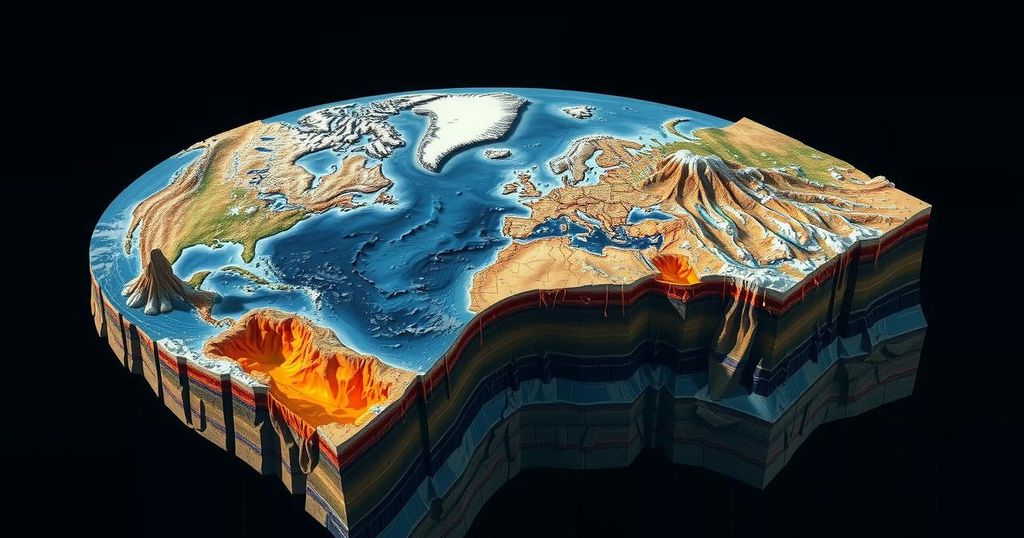Understanding Plate Tectonics: Evolution of Continental Drift Theory

Plate tectonics is a transformative theory in geology explaining the movement of the Earth’s lithospheric plates, encompassing continental drift and geological phenomena such as earthquakes and volcanism. Initially proposed by Alfred Wegener, the theory faced skepticism until modern geophysical evidence validated its foundational concepts. By studying ocean floor features and employing paleomagnetism, scientists have refined our understanding of continental movements and established a comprehensive framework for Earth’s geological dynamics. Key figures like J. Tuzo Wilson have significantly contributed to the theory’s development, reinforcing its importance across various geological studies.
Plate tectonics is a vital concept in geology that describes the movement of the Earth’s lithospheric plates. This theory elucidates various geological phenomena, including continental drift, subduction, and earthquakes. The historical perspective of continental drift, promoted by Alfred Wegener, suggested that continents were once joined together in a supercontinent named Pangea. Evidence supporting this hypothesis includes the discovery of similar geological sequences and paleomagnetic studies that indicate past continental configurations. Despite initial skepticism from scientists and geological communities, the emergence of modern geophysical methods and the mapping of ocean basins have reinforced the theory of plate tectonics, providing a more comprehensive understanding of Earth’s dynamics.
The examination of ocean floor features, such as ocean ridges and trenches, has revealed vital information about plate boundaries. Ocean ridges signify areas where tectonic plates are diverging, resulting in new oceanic crust formation, while trenches indicate subduction zones where one plate moves beneath another. Transform faults represent lateral sliding boundaries that cause earthquakes, demonstrating the active nature of these geological processes.
Ultimately, plate tectonics serves as a framework for understanding not only the distribution of earthquakes and volcanoes but also the historical movements of continents, effectively reshaping our knowledge of terrestrial geology and contributing to various fields, including tectonics, volcanism, and paleoenvironmental studies.
Through the persistent efforts of geologists, including J. Tuzo Wilson and Walter Alvarez, the initial theories of continental drift have dramatically evolved into a unifying theory of tectonics, fundamentally altering the scientific community’s approach to Earth’s geological history.
The concept of plate tectonics arises from the earlier theories of continental drift initially proposed by Alfred Wegener in the early 20th century. Wegener’s ideas encountered substantial opposition due to the perceived lack of mechanisms explaining the movement of continents across rigid oceanic crust. However, advancements in geophysical research and paleomagnetic studies led to a renaissance in the acceptance of the theory during the mid-20th century, culminating in the present understanding of the Earth’s lithosphere as a series of dynamic plates moving over the more fluid asthenosphere beneath. This understanding transformed geological sciences, as it provided a cohesive explanation for various geological phenomena, including earthquakes and volcanic activity.
In conclusion, the theory of plate tectonics has revolutionized our understanding of the dynamic processes shaping the Earth. It integrates historical perspectives of continental drift with modern geophysical evidence and geological findings. The mapping of ocean basins and the study of paleomagnetism have provided compelling support for the movements of tectonic plates. As geology continues to evolve, the principles of plate tectonics will remain paramount in comprehending the Earth’s geological history and the processes that influence its present and future landscapes.
Original Source: www.britannica.com






